Abstract
The mechanisms of Newcastle disease virus-(NDV) induced inhibition of cell protein and ribonucleic acid (RNA) synthesis were investigated. It was observed that the ability of NDV to inhibit cell RNA synthesis is dependent on the virus strain. The inhibitors, azauridine and cycloheximide, were added to cell cultures at different times after infection to study the roles of protein and RNA synthesis in the viral inhibition process. Viral inhibition of cell RNA synthesis and viral inhibition of cell protein synthesis become resistant to cycloheximide at a different time after infection than that in which they become resistant to azauridine. The results indicate that the inhibition of cell RNA synthesis by the Texas strain involves the synthesis of inhibitory proteins which are coded by the viral genome. The Texas and Beaudette strains of NDV appear to employ different mechanisms for the inhibition of host-cell protein synthesis. Viral inhibition of cell protein synthesis does not appear to cause, or be the result of, viral inhibition of cell RNA synthesis.
Full text
PDF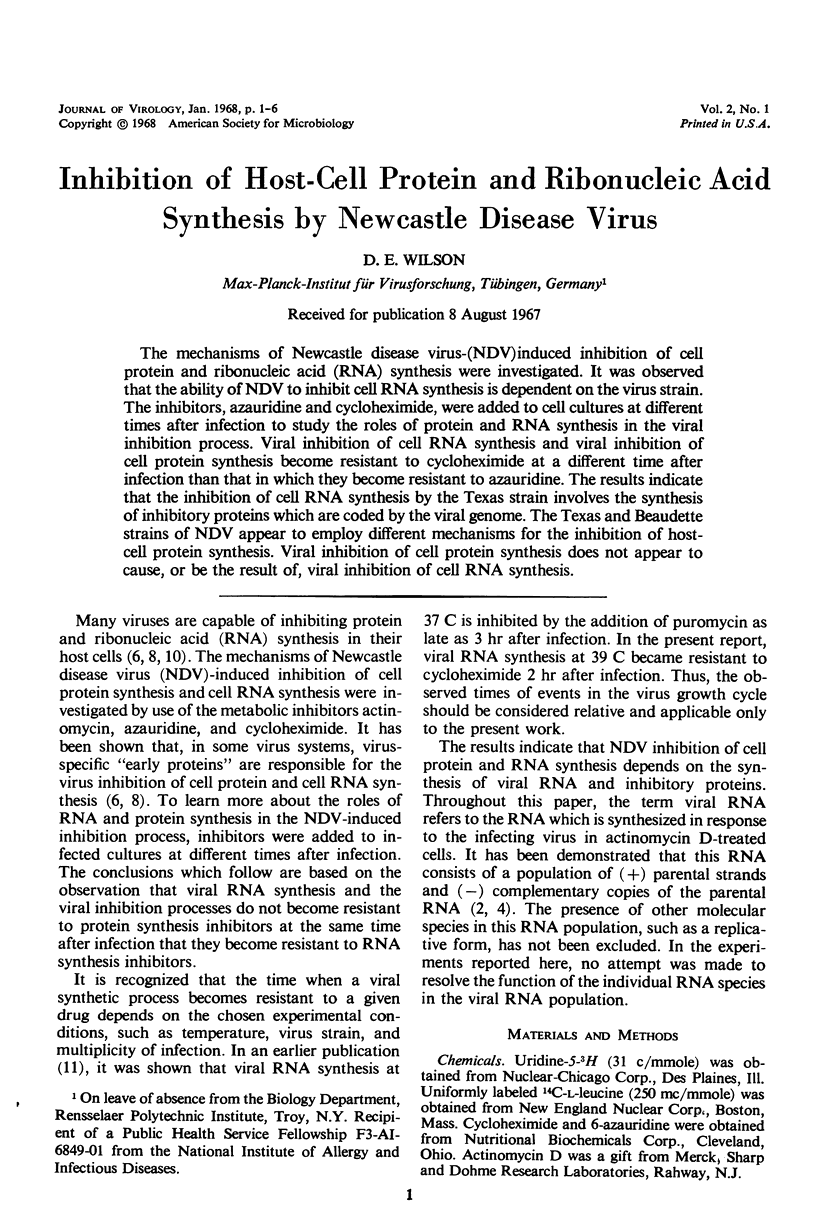

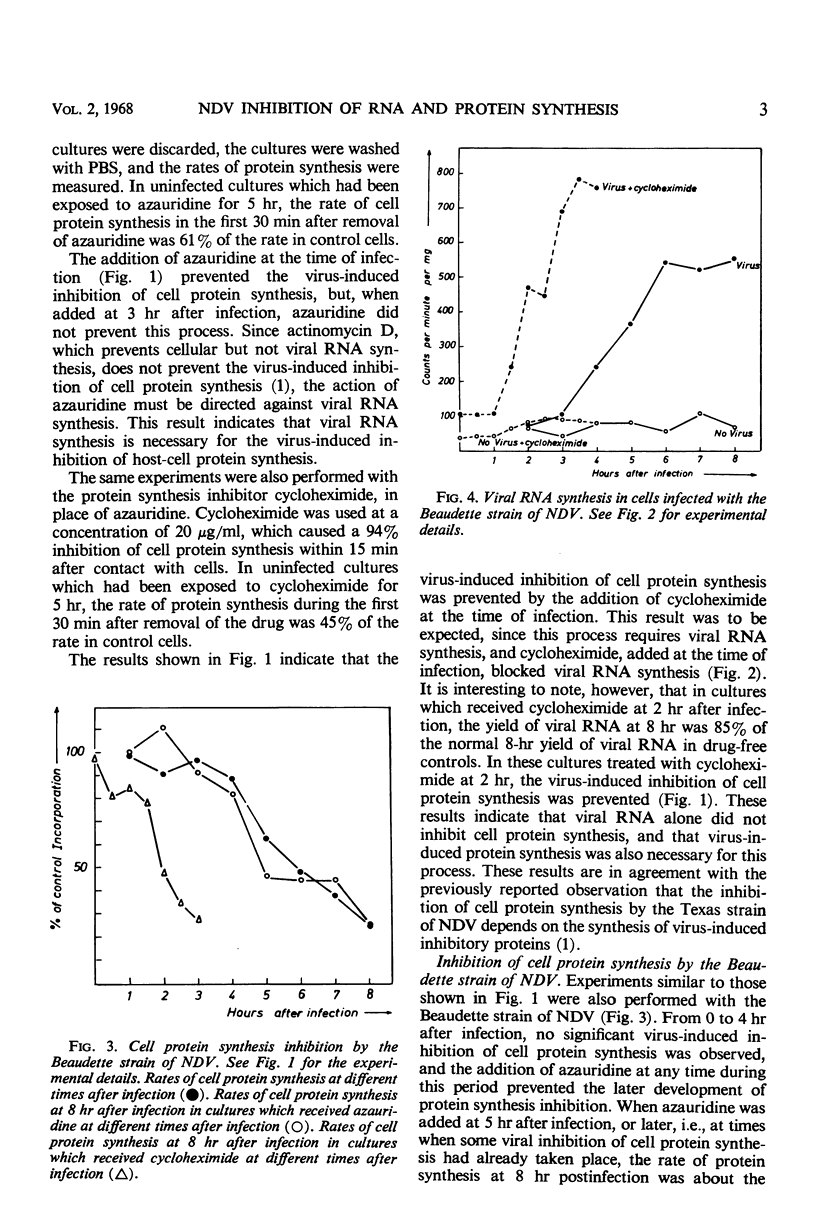
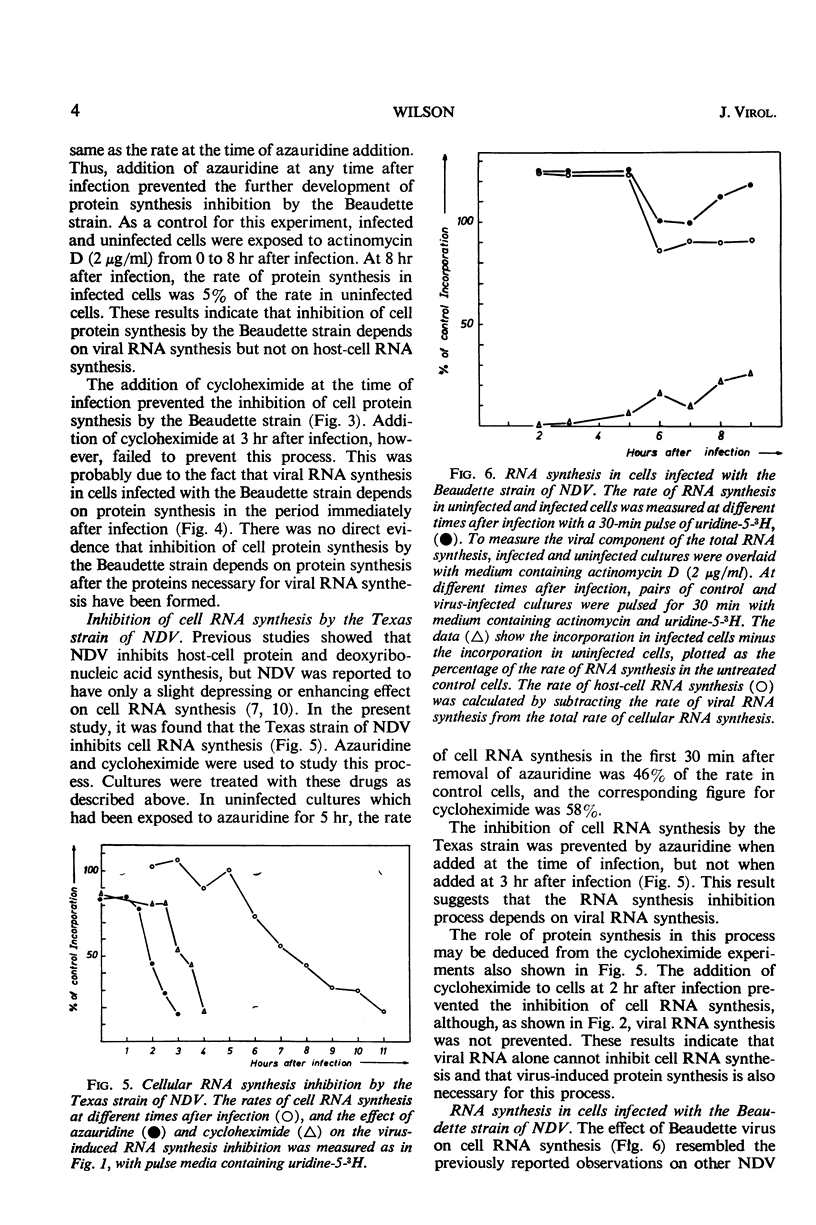
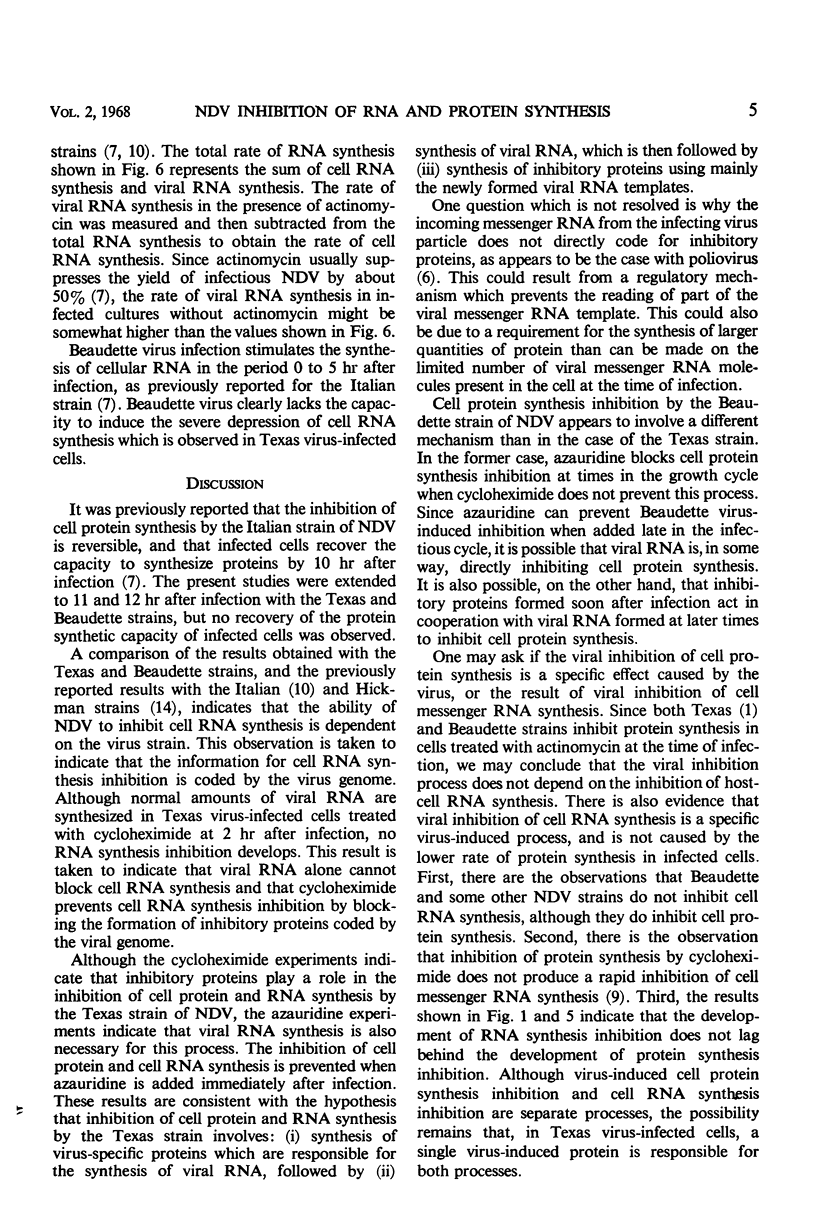
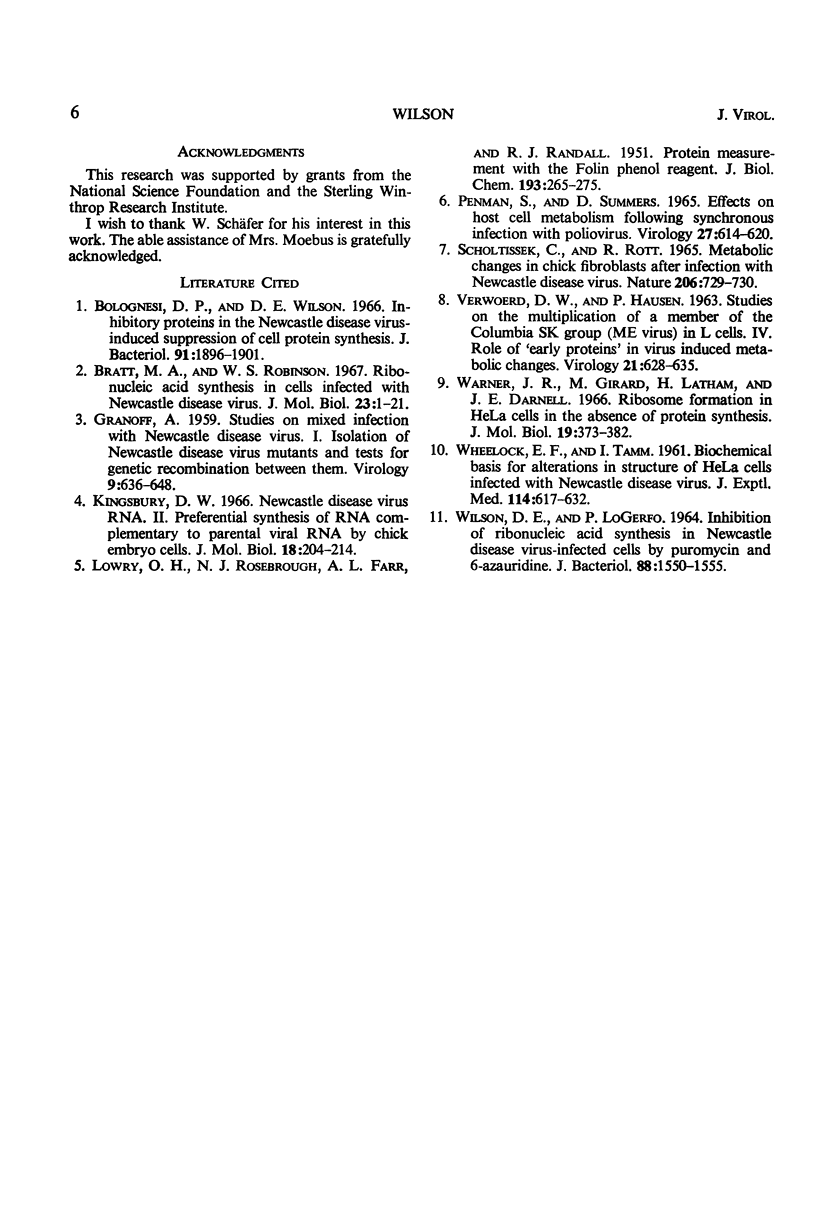
Selected References
These references are in PubMed. This may not be the complete list of references from this article.
- Bolognesi D. P., Wilson D. E. Inhibitory proteins in the Newcastle disease virus-induced suppression of cell protein synthesis. J Bacteriol. 1966 May;91(5):1896–1901. doi: 10.1128/jb.91.5.1896-1901.1966. [DOI] [PMC free article] [PubMed] [Google Scholar]
- GRANOFF A. Studies on mixed infection with Newcastle disease virus. I. Isolation of Newcastle disease virus mutants and tests for genetic recombination between them. Virology. 1959 Dec;9:636–648. doi: 10.1016/0042-6822(59)90154-0. [DOI] [PubMed] [Google Scholar]
- Kingsbury D. W. Newcastle disease virus RNA. II. Preferential synthesis of RNA complementary to parental viral RNA by chick embryo cells. J Mol Biol. 1966 Jun;18(1):204–214. doi: 10.1016/s0022-2836(66)80086-4. [DOI] [PubMed] [Google Scholar]
- LOWRY O. H., ROSEBROUGH N. J., FARR A. L., RANDALL R. J. Protein measurement with the Folin phenol reagent. J Biol Chem. 1951 Nov;193(1):265–275. [PubMed] [Google Scholar]
- Scholtissek C., Rott R. Metabolic changes in chick fibroblasts after infection with Newcastle disease virus. Nature. 1965 May 15;206(985):729–730. doi: 10.1038/206729a0. [DOI] [PubMed] [Google Scholar]
- VERWOERD D. W., HAUSEN P. STUDIES ON THE MULTIPLICATION OF A MEMBER OF THE COLUMBIA SK GROUP (ME VIRUS) IN L CELLS. IV. ROLE OF "EARLY PROTEINS" IN VIRUS INDUCED METABOLIC CHANGES. Virology. 1963 Dec;21:628–635. doi: 10.1016/0042-6822(63)90236-8. [DOI] [PubMed] [Google Scholar]
- WHEELOCK E. F., TAMM I. Biochemical basis for alterations in structure and function of HeLa cells infected with Newcastle disease virus. J Exp Med. 1961 Nov 1;114:617–632. doi: 10.1084/jem.114.5.617. [DOI] [PMC free article] [PubMed] [Google Scholar]
- WILSON D. E., LOGERFO P. INHIBITION OF RIBONUCLEIC ACID SYNTHESIS IN NEWCASTLE DISEASE VIRUS-INFECTED CELLS BY PUROMYCIN AND 6-AZAURIDINE. J Bacteriol. 1964 Dec;88:1550–1555. doi: 10.1128/jb.88.6.1550-1555.1964. [DOI] [PMC free article] [PubMed] [Google Scholar]
- Warner J. R., Girard M., Latham H., Darnell J. E. Ribosome formation in HeLa cells in the absence of protein synthesis. J Mol Biol. 1966 Aug;19(2):373–382. doi: 10.1016/s0022-2836(66)80011-6. [DOI] [PubMed] [Google Scholar]


